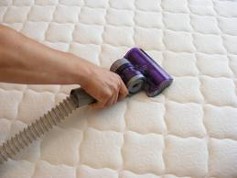Bed bugs: identification and treatment

Bed bugs are one of the most challenging issues a property manager can face in their day-to-day operations. In the past, bed bugs were virtually eradicated but this century has seen a resurgence in cases, much to the chagrin of non-profit and market rent housing providers alike. What happens when you think you may have a bed bug infestation? Where do you start? Let’s start with some background information on what these pests are and how to spot an infestation.
What are bed bugs?

Bed bugs are small, wingless insects whose average size is four to five millimetres. Adult bed bugs are typically an amber/brown colour which, upon feeding changes to dark red/purple. Their eggs are white and are about one millimetre in length. A female bed bug lays up to five eggs per day which hatch in six to 17 days.
Bed bugs have flat bodies that easily allow them to slip into cracks and crevices. They often hide in mattresses, box springs, baseboards and nightstands, among other places. Bedrooms are an ideal habitat for bed bugs as they have many places to hide and a stable food source; they feed on human blood at night and are attracted to the carbon dioxide that we exhale while sleeping.
Though bed bugs aren’t typically known to transmit disease, reactions to the bites themselves vary in severity. Those who are allergic to bed bug bites may suffer from itchy, sometimes painful welts while others have a mild reaction – or none at all. Infestations can cause anxiety and a reduction in the quantity and quality of sleep for those affected.
What are the early signs of infestation?
The first symptom of an infestation is the appearance of bites on the skin, often on areas of the body that are left exposed while sleeping. These bites often appear in a row or cluster of two or three bites close to one another. Small spots of blood or the bugs’ dark fecal stains on sheets may also be visible.
Take action as soon as possible if a tenant comes to you with concerns. A quick reaction time is your best chance at preventing the infestation from spreading to other units.
A tenant suspects an infestation. What steps should you take?
Perform a unit inspection

Get confirmation of an infestation. Start by inspecting the sleeping area. Inspect the linens (especially fitted sheets), mattress, box spring and bed frame for stains, live insects, or skin shells. Other places to inspect include upholstered furniture, picture frames and electrical outlets.
New infestations may be harder to spot than more active ones. If you are unsure and/ or do not have an in-house pest control team, it may be a good idea to bring in professional help. ONPHA Select has a partner who can help with detection and treatment as well as staff and tenant education.
Prepare the unit for treatment
Clean and declutter the unit. Dispose of any items that can’t be washed, heated or steam cleaned.
Ensure any items to be disposed of are wrapped in plastic before they are removed from the unit.

Steam clean and wash items. Steam clean infested mattresses, upholstery and plush items that cannot be washed with hot water and detergent. Wash mattress pads, infested clothing, curtains, etc. in hot water and dry on the hottest setting and store the cleaned items in heavy-duty plastic bags.
Vacuum. Use a vacuum with a HEPA filter to vacuum all surfaces in the unit. Use special attachments to vacuum mattresses, bed frames, non-washable furniture surfaces, baseboards, etc. thoroughly. Do not use handheld vacuums or those with a cloth bag or fabric hoses. Be sure to keep the vacuum running for bit after finishing so that all bed bugs are sucked into the bag. Dispose of the bag or the contents of the vacuum in a white plastic bag. Clean the vacuum thoroughly.
While the tenant is responsible for ensuring their unit is prepared for treatment, consider offering support to ensure that the preparation is done thoroughly. The more thorough the preparation, the better the chance of the treatment being successful. Supports may include providing a steam cleaner, proper vacuuming equipment and thick plastic bags.
Chemical treatment
Chemical treatment consists of two chemical applications. Commercial chemical treatments must be conducted by a class 2 structural exterminator. The second treatment must take place within 10-14 days of the first to maximize the treatments’ effectiveness. Tenants will have to vacate their units for a minimum of four to six hours after each treatment.
Re-inspection
The unit must be examined as thoroughly as it was in the original inspection to be sure the infestation has been eliminated.
Ultimately, the best way to manage infestations before they get out of control and spread to other units is to educate tenants. Ensure they know the signs of infestation so they can sound the alarm early and increase the chance of successful treatment.
Visit the ONPHA website* to learn more about bed bugs, prevention and treatment or contact us at member.support@onpha.org if you have any questions.
* You must be an ONPHA Housing Member and logged into the website to view these resources.




